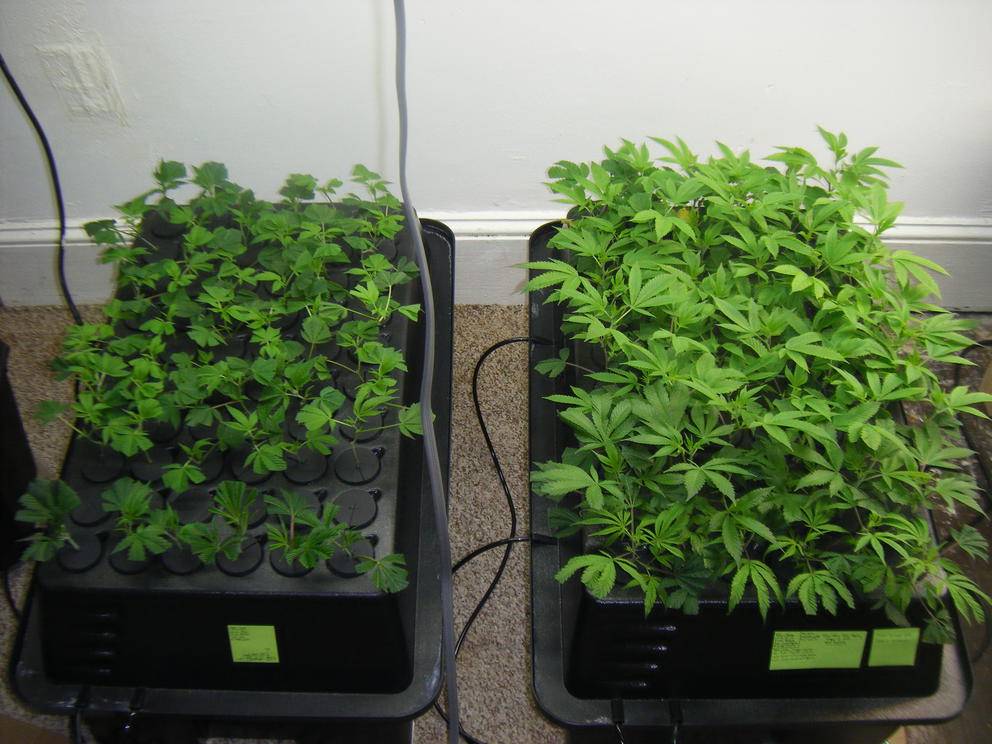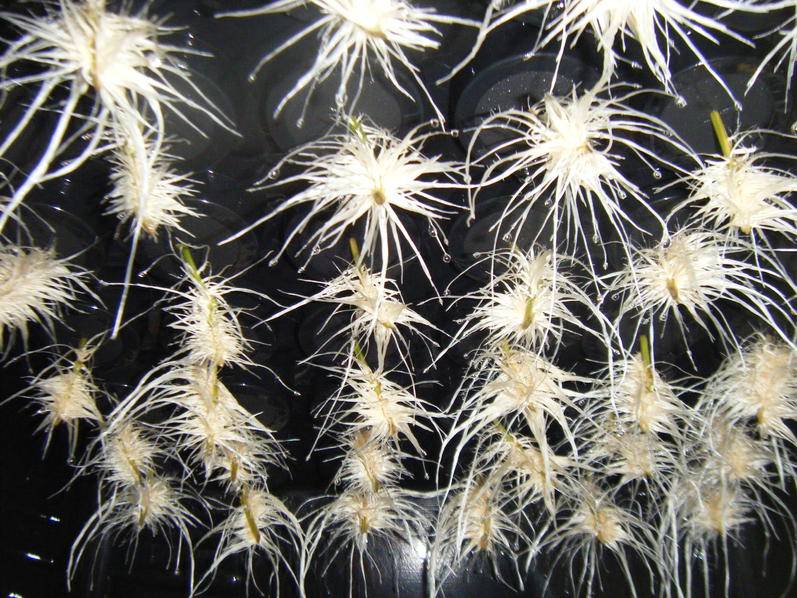Snype's Guide To My Personal FFOF (MOM) Peeps! (This link is your instruction manual for your MOMs):
https://www.icmag.com/ic/showthread.php?t=268343
That little message is for people who know who they are. All others can disregard it.
This grow already happened last year. Details will be short and to the point. All my data is saved in my files.


The cuttings were taken and put into an EZ Cloner. After no more than 10 days, I have full blown healthy roots. Most growers seem to think that water temperatures must stay under 73 degrees F. This is simply not true. I can run my temperatures in the 90's and still get healthy full blown roots. The trick is to use 1 PPM of Chlorine and don't use the air pump that came with your cloner. I use a much bigger air pump than my cloner came with. There is no way that you can use too much air. In fact, the more air that you can use the better.

After the plants get their roots in the cloner, they are transplanted into an Ebb & Flow table into what I call VEG-A. In this specific 2' x 4' Botanicare tray with a special order Botanicare lid with (15) 5" holes, I place 15 rooted cuttings into 5" pots of hydroton. It is best to take more clones than you will need and choose the healthiest ones. The plants don't ever sit on the tray. They hang directly in the air. In my experience when your plants hang directly in the air and the pots don't sit on the trays, you are able to grow a better root structure.


After 9 days, these plants range between heights of 9"-12". The point of VEG-A is not to grow the plants. You want to focus on root development. The light starts higher above the plants in the first 3 days of VEG-A. The reason is because you don't want to have to over water the plants. If I keep the light lower in the first days, then I will have to water more frequently but it will also slow down root development at the same time. Through data and testing I have seen that after a few days I can lower the light and then water more frequently as roots grow from under the tray lid. Your environment will not be the same as mine and environment will effect our plants differently. There is no formula that anyone can give you. You have to do your own testing and keep good accurate data and you will learn what your plants want. For me, the first 3 days, the tray gets flooded every 6 hours. On the 4th day, the tray gets flooded every 4 hours. On the 5th day the tray gets flooded every 3 hours and on the 6th day the plants get flooded every 2 hours. By the 7th day I flood the tray every hour and root growth has exploded by this time.
I flood my tray much differently than other growers who grow in Ebb & Flow. I completely remove the riser from the drain fitting and I also remove the screen on the drain fitting. This means that water flows down into the rez at a much faster rate with my technique and you get more dissolved oxygen into your solution. This also means that you will have to use a bigger water pump to accomplish this goal. If you use the riser on that drain fitting, when your pump turns off, it takes time for your solution to fall back down into the rez. That means that you are losing dissolved oxygen in your solution when your pump turns off and the more dissolved oxygen that you have, the better roots you will grow. In my opinion, you don't want your roots sitting in solution when your pump turns off while it takes a longer time for the solution to drain back into the rez. When my pump turns off, all the solution falls back into the rez within 60 seconds. I had a whole thread on this topic a couple of years back and it didn't seem to be taken seriously. I did all my testing with my Lab Grade Mettler Toledo Dissolved Oxygen meter that cost me over $2,000.
https://www.icmag.com/ic/showthread.php?t=268343
That little message is for people who know who they are. All others can disregard it.
This grow already happened last year. Details will be short and to the point. All my data is saved in my files.
The cuttings were taken and put into an EZ Cloner. After no more than 10 days, I have full blown healthy roots. Most growers seem to think that water temperatures must stay under 73 degrees F. This is simply not true. I can run my temperatures in the 90's and still get healthy full blown roots. The trick is to use 1 PPM of Chlorine and don't use the air pump that came with your cloner. I use a much bigger air pump than my cloner came with. There is no way that you can use too much air. In fact, the more air that you can use the better.
After the plants get their roots in the cloner, they are transplanted into an Ebb & Flow table into what I call VEG-A. In this specific 2' x 4' Botanicare tray with a special order Botanicare lid with (15) 5" holes, I place 15 rooted cuttings into 5" pots of hydroton. It is best to take more clones than you will need and choose the healthiest ones. The plants don't ever sit on the tray. They hang directly in the air. In my experience when your plants hang directly in the air and the pots don't sit on the trays, you are able to grow a better root structure.
After 9 days, these plants range between heights of 9"-12". The point of VEG-A is not to grow the plants. You want to focus on root development. The light starts higher above the plants in the first 3 days of VEG-A. The reason is because you don't want to have to over water the plants. If I keep the light lower in the first days, then I will have to water more frequently but it will also slow down root development at the same time. Through data and testing I have seen that after a few days I can lower the light and then water more frequently as roots grow from under the tray lid. Your environment will not be the same as mine and environment will effect our plants differently. There is no formula that anyone can give you. You have to do your own testing and keep good accurate data and you will learn what your plants want. For me, the first 3 days, the tray gets flooded every 6 hours. On the 4th day, the tray gets flooded every 4 hours. On the 5th day the tray gets flooded every 3 hours and on the 6th day the plants get flooded every 2 hours. By the 7th day I flood the tray every hour and root growth has exploded by this time.
I flood my tray much differently than other growers who grow in Ebb & Flow. I completely remove the riser from the drain fitting and I also remove the screen on the drain fitting. This means that water flows down into the rez at a much faster rate with my technique and you get more dissolved oxygen into your solution. This also means that you will have to use a bigger water pump to accomplish this goal. If you use the riser on that drain fitting, when your pump turns off, it takes time for your solution to fall back down into the rez. That means that you are losing dissolved oxygen in your solution when your pump turns off and the more dissolved oxygen that you have, the better roots you will grow. In my opinion, you don't want your roots sitting in solution when your pump turns off while it takes a longer time for the solution to drain back into the rez. When my pump turns off, all the solution falls back into the rez within 60 seconds. I had a whole thread on this topic a couple of years back and it didn't seem to be taken seriously. I did all my testing with my Lab Grade Mettler Toledo Dissolved Oxygen meter that cost me over $2,000.
Last edited:






